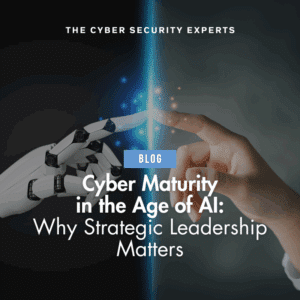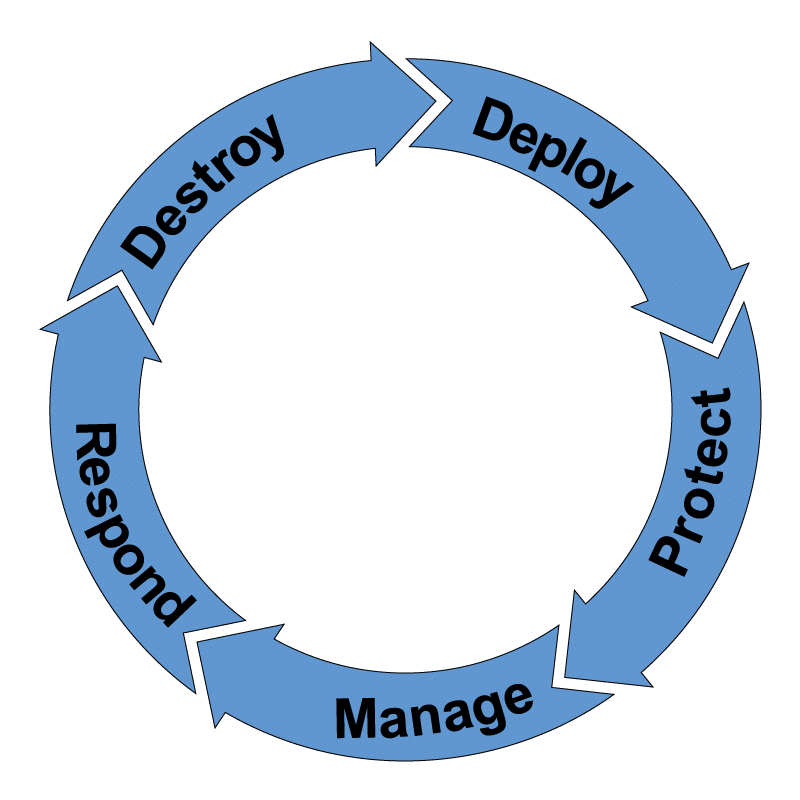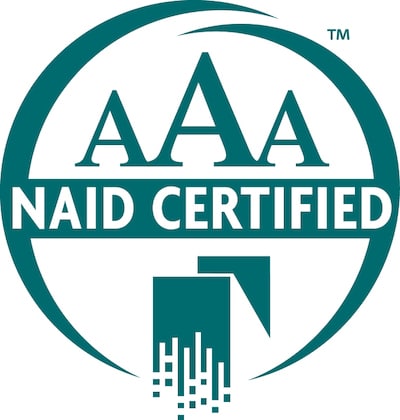Cyber Maturity in the Age of AI: Why Strategic Leadership Matters
 Organizations are under growing pressure to keep pace with accelerating digital complexity and evolving cyber risks. Emerging technologies are changing not only the tools we use to defend against threats but also the nature of the threats themselves. The difference between staying ahead and falling behind often comes down to cyber maturity, and at the center of that maturity is strategic leadership.
Organizations are under growing pressure to keep pace with accelerating digital complexity and evolving cyber risks. Emerging technologies are changing not only the tools we use to defend against threats but also the nature of the threats themselves. The difference between staying ahead and falling behind often comes down to cyber maturity, and at the center of that maturity is strategic leadership.
Understanding Cyber Maturity
Cyber maturity is not a one-time achievement. It is a dynamic state of readiness that reflects how effectively an organization can manage cybersecurity risks across people, processes, and technology. Mature organizations do more than react to incidents. They anticipate them, mitigate them, and recover from them with minimal disruption.
Structured frameworks help organizations assess and improve their maturity. The National Institute of Standards and Technology Cybersecurity Framework (NIST CSF) and the AI Risk Management Framework (AI RMF) are two leading examples. These models help businesses define their current state, set goals, and plan measurable steps toward improvement.
Key domains of cyber maturity include:
- Visibility: Having complete awareness of digital assets, data flows, vulnerabilities, and access points. Without this foundational knowledge, threats can go undetected.
- Governance: Establishing clear roles, responsibilities, and accountability for cybersecurity policies. This domain also includes executive oversight and communication protocols.
- Response: Creating tested incident response plans and establishing processes to detect and contain threats quickly.
- Recovery: Building resilience into systems and procedures so that operations can be restored rapidly following an attack or disruption.
Cyber maturity is not merely about achieving compliance. It is about developing a sustainable, strategic approach that turns cybersecurity into a business enabler rather than a cost center.
The Dual Edge of AI
Artificial intelligence is transforming the cybersecurity landscape in two distinct ways: as a defense tool and as an adversarial weapon.
On the defensive side, AI and machine learning can analyze vast quantities of network traffic and behavior logs in real time. This improves the ability to detect threats that signature-based tools might miss. AI can also reduce the time it takes to investigate and respond to incidents by automating repetitive security tasks, such as correlating alerts or generating playbooks.
But AI is also being used by bad actors. Tools like generative AI and deepfakes can produce convincingly human content, including voice and video, to carry out advanced phishing and impersonation attacks. In addition, “shadow AI” (unauthorized AI tools used by employees) can introduce significant governance risks. These tools often operate outside of established IT oversight, making them difficult to detect and manage.
In this new threat environment, relying on AI alone is not enough. Without governance and strategic oversight, AI may expand an organization’s risk surface faster than it improves its security posture.
Governance and Risk Mitigation
AI governance ensures that these technologies are used ethically, transparently, and safely within the organization. Core pillars of a sound AI governance strategy include:
- Privacy and Security: All AI tools must be built and maintained with privacy-by-design and security-by-default principles.
- Fairness and Explainability: Decisions made or influenced by AI must be explainable and free of bias. This becomes especially important in regulated industries like healthcare and finance.
- Ethics and Accountability: Leadership must define what constitutes ethical AI usage and create accountability structures to enforce it.
This is where frameworks such as Reclamere’s CSO360 program come in. CSO360 provides organizations with executive-level cybersecurity leadership on a virtual basis. It helps businesses define their AI governance strategies, identify shadow AI in their environment, and develop policies that scale with growth and complexity. For companies that lack internal resources or full-time cybersecurity executives, CSO360 offers a powerful, cost-effective solution.
Third-Party Risk in an AI World
As more organizations integrate AI into their business processes, they are also inheriting the risks embedded in their vendor ecosystems. Third-party providers—especially those offering AI-infused software or platforms—can introduce vulnerabilities that are difficult to detect until they are exploited.
Key concerns in third-party AI risk management include:
- Evaluating vendor AI capabilities: Are their algorithms secure, explainable, and tested against adversarial attacks? What data do they collect, and how is it stored?
- Monitoring AI in the supply chain: Even if your organization practices responsible AI, your partners and vendors may not. One weak link in the supply chain can become a backdoor to sensitive data or systems.
- Assessing regulatory exposure: Increasingly, regulators are holding companies accountable not only for their own AI usage but for the practices of their vendors.
Reclamere’s SCR360 service complements CSO360 by focusing specifically on third-party risk. SCR360 evaluates vendors, technologies, and supply chains with an emphasis on how AI is used, governed, and secured. It also helps organizations establish contractual obligations and oversight mechanisms that extend their security expectations to all partners.
How CSO360 Supports AI-Cyber Maturity
CSO360 is more than a stopgap for missing in-house expertise. It is a strategic ally for organizations that are serious about building mature, resilient cybersecurity programs. Some of the key services offered through CSO360 include:
- Virtual cybersecurity leadership: Gain access to seasoned CISOs and strategic advisors without the cost of hiring full-time executives.
- Policy development: Create or revise policies related to data governance, AI deployment, identity and access management, and more.
- Strategic roadmap planning: Build out timelines and maturity goals aligned with compliance needs, risk tolerance, and business objectives.
Whether your business is in the early stages of digital transformation or facing urgent regulatory pressure, CSO360 can provide tailored guidance to elevate your cyber maturity and reduce exposure to emerging threats.
Key Recommendations for Building AI-Cyber Maturity
Cyber maturity is achievable, but it requires intentional steps. Here are practical recommendations for organizations looking to improve:
- Start with a Cyber Maturity Snapshot
Use a trusted framework like NIST CSF to assess where your organization currently stands across visibility, governance, response, and recovery. This assessment becomes the foundation for improvement. - Perform AI-Specific Risk Assessments
General cybersecurity assessments may miss critical AI-specific risks. Evaluate the AI tools in your environment for governance gaps, vulnerabilities, and compliance risks. - Establish AI Governance Aligned with Business Goals
Governance should not be theoretical. It must be actionable, measurable, and aligned with the strategic priorities of your organization. - Educate and Engage Stakeholders
Boards and executive teams must be part of the conversation. Provide clear, non-technical updates and strategic perspectives that allow leaders to make informed decisions about AI adoption. - Engage a Trusted MSSP Partner
Organizations often struggle to implement frameworks and best practices without external guidance. Working with an MSSP like Reclamere provides access to the knowledge, tools, and support needed to move the maturity needle forward.
Final Thoughts
AI introduces both new weapons and new shields in cybersecurity. The organizations that succeed will not be the ones that adopt AI the fastest, but the ones that lead with foresight, establish governance, and invest in long-term maturity. Cybersecurity is not just a technology problem — it is a leadership challenge. Reclamere’s CSO360 and SCR360 services provide the expertise to turn that challenge into a strategic advantage.
Discover how AI is changing the rules of risk. Grab the guide now and learn what smart organizations are doing differently.








